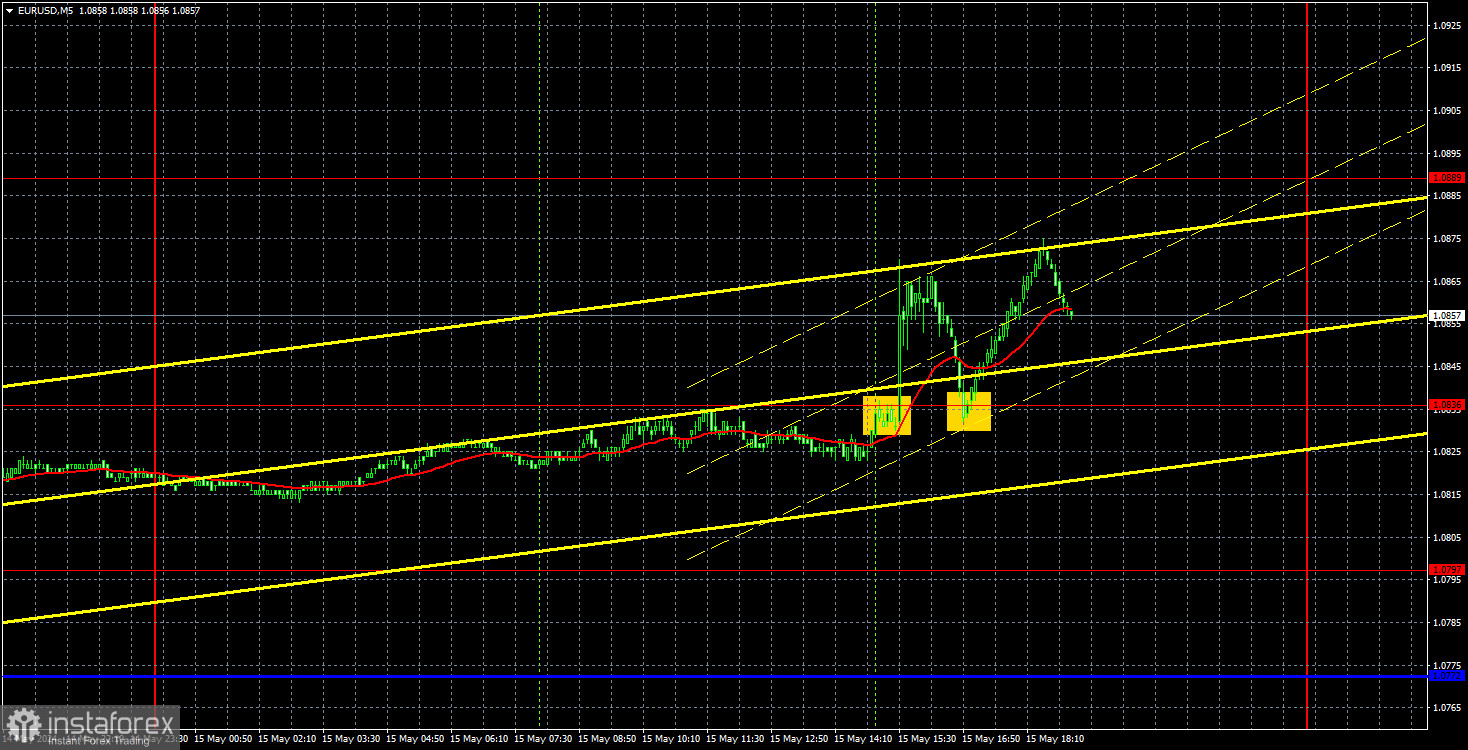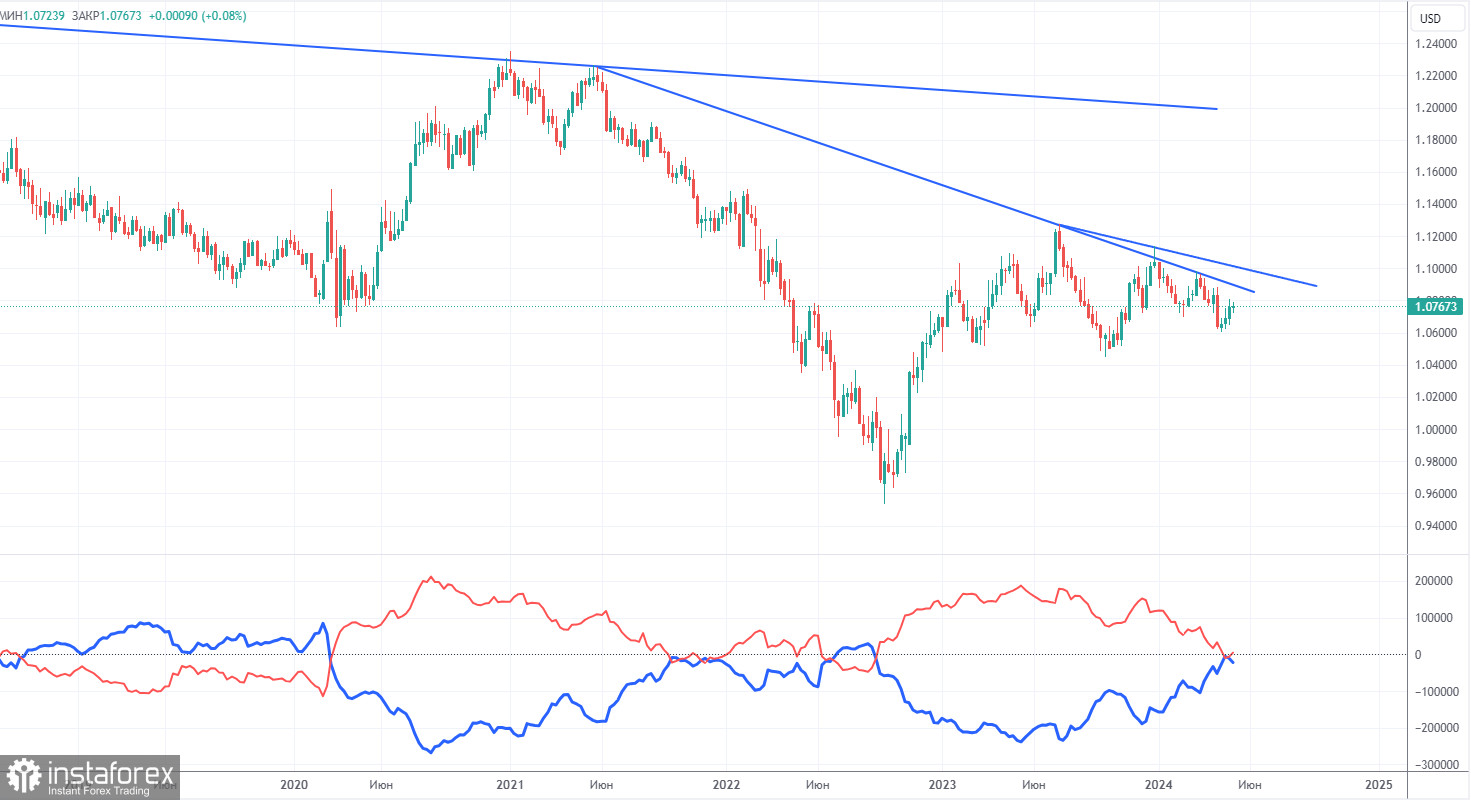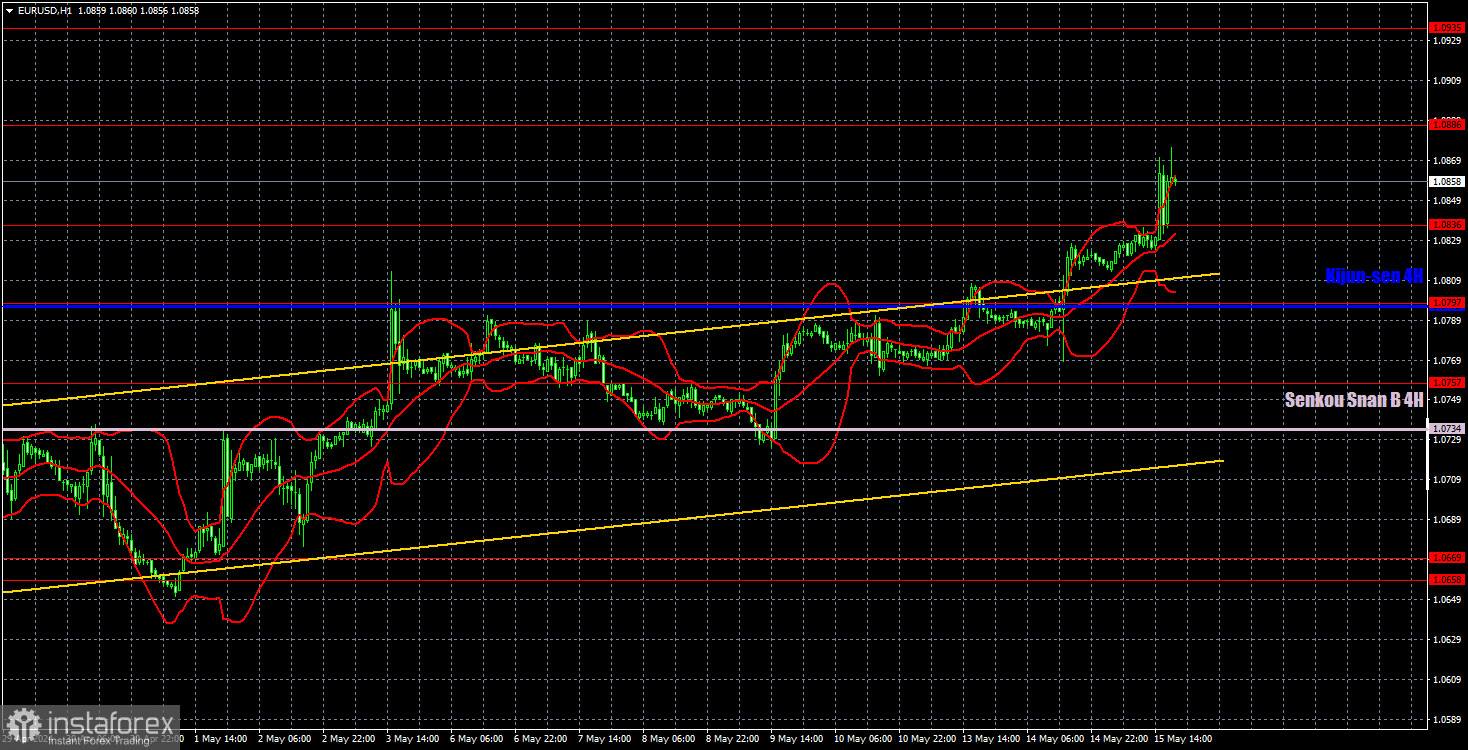Analysis of EUR/USD 5M

The EUR/USD pair continued to trade upwards on Wednesday. Volatility was a bit higher, as we had anticipated. Obviously, the U.S. inflation report is a very important event for the forex market, so a reaction had to follow. However, take note that we both anticipated and did not expect such a market reaction. On one hand, we warned you that the pair could rise or fall if the actual value matched the forecast. And this is exactly what happened. However, after the pair moved equally in both directions, the market resumed buying. On what basis? The same U.S. inflation report clearly did not justify new short positions on the dollar.
Let's break it down. U.S. inflation slowed to 3.4%. What does this mean? In terms of the Federal Reserve's monetary policy outlook, absolutely nothing. The slowdown in inflation was so small that it's impossible to say that within a few months it will reach a level where the Fed can finally start discussing monetary easing again. Impossible unless there is a strong desire for it. And the market is quite eager to buy the euro and sell the dollar right now. So, once again, we have a situation where a report triggered the dollar's decline but technically, it shouldn't have even happened.
From a technical perspective, there were two buy signals on Wednesday. First, the pair broke above the 1.0836 level, but this signal was very difficult to execute on time as it formed exactly during the release of the U.S. inflation data. Traders could open long positions using the second buy signal – a rebound from the same level – as these could be manually closed by the end of the day. The profit was around 20-25 pips.
COT report:

The latest COT report is dated May 7. The net position of non-commercial traders has been bullish for quite some time, but now the situation has finally changed. The net position of non-commercial traders (red line) has been decreasing in recent months, while that of commercial traders (blue line) has been increasing. This shows that market sentiment is turning bearish, as speculators increasingly sell the euro. Currently, their positions coincide in terms of volume. We don't see any fundamental factors that can support the euro's strength, while technical analysis also suggests a downtrend. Three descending trend lines on the weekly chart indicate that there's a good chance of continuing the decline.
The red and blue lines have crossed, and now bears may have a significant advantage. So we strongly believe that the euro will fall further. During the last reporting week, the number of long positions for the non-commercial group increased by 3,400, while the number of short positions decreased by 7,900. Accordingly, the net position increased by 12,300. Overall, both the euro and the net position continue to decline. The number of buy contracts is only higher than the number of sell contracts among non-commercial traders by 4,000.
Analysis of EUR/USD 1H

On the 1-hour chart, the EUR/USD pair has been going through a weak bullish correction against a global downward trend for three weeks now. Since expectations for a Federal Reserve rate cut in 2024 have significantly decreased, the U.S. currency should rise in the medium term. We still expect the price to consolidate below the ascending channel, so the downtrend can resume. However, it seems that the market is not ready to buy the dollar under any circumstances.
On May 16, we highlight the following levels for trading: 1.0530, 1.0581, 1.0658-1.0669, 1.0757, 1.0797, 1.0836, 1.0886, 1.0935, 1.1006, 1.1092, as well as the Senkou Span B (1.0734) and Kijun-sen (1.0795) lines. The Ichimoku indicator lines can move during the day, so this should be taken into account when identifying trading signals. Don't forget to set a Stop Loss to breakeven if the price has moved in the intended direction by 15 pips. This will protect you against potential losses if the signal turns out to be false.
On Thursday, there are no significant events scheduled in the Eurozone. The U.S. docket will feature several minor reports such as building permits and industrial production. We believe that these reports will not be able to trigger movements of more than 20 pips. At the same time, they are unlikely to affect the market's persistent desire to buy the pair.
Description of the chart:
Support and resistance levels are thick red lines near which the trend may end. They do not provide trading signals;
The Kijun-sen and Senkou Span B lines are the lines of the Ichimoku indicator, plotted to the 1H timeframe from the 4H one. They provide trading signals;
Extreme levels are thin red lines from which the price bounced earlier. They provide trading signals;
Yellow lines are trend lines, trend channels, and any other technical patterns;
Indicator 1 on the COT charts is the net position size for each category of traders;
 English
English 
 Русский
Русский Bahasa Indonesia
Bahasa Indonesia Bahasa Malay
Bahasa Malay ไทย
ไทย Español
Español Deutsch
Deutsch Български
Български Français
Français Tiếng Việt
Tiếng Việt 中文
中文 বাংলা
বাংলা हिन्दी
हिन्दी Čeština
Čeština Українська
Українська Română
Română

